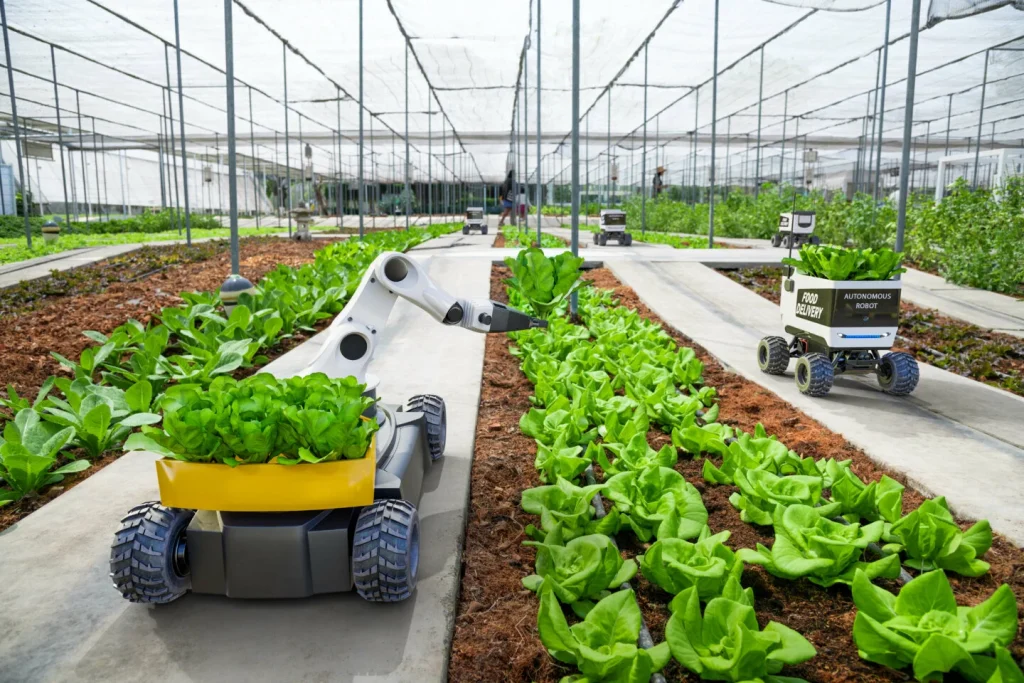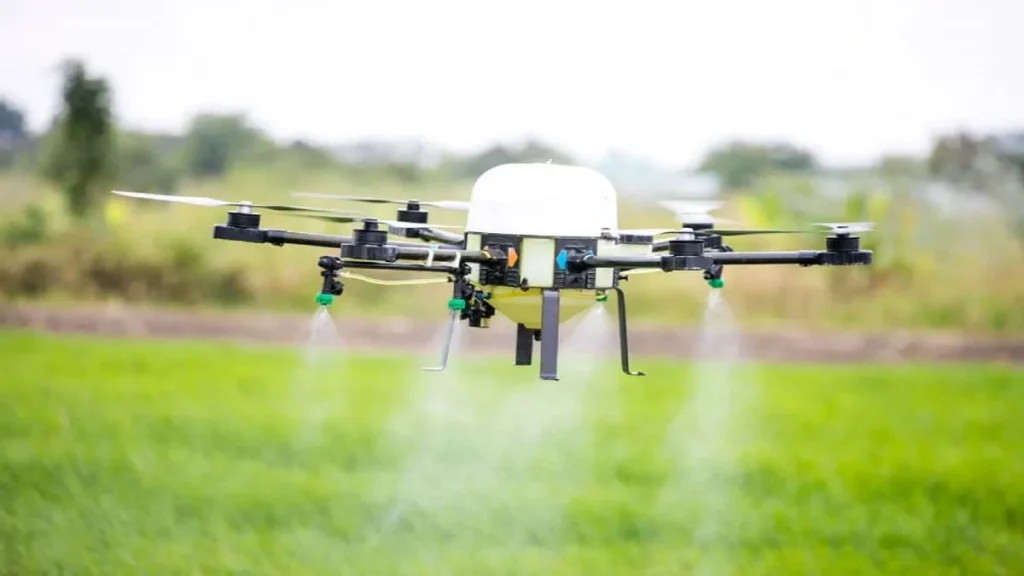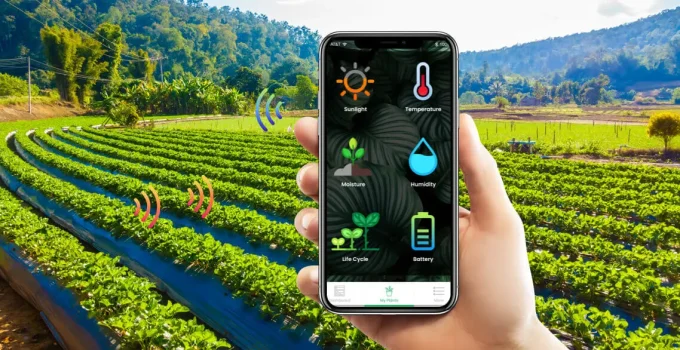Technology has taken over every aspect of our lives in today’s fast-paced world, and farming is not an exception. Using the Internet of Things , technology has revolutionized farming through smart farming. Farmers can collect and evaluate data in real-time using IoT technology devices attached to their operations.
Farmers can monitor and predict crop, weather, livestock, and soil conditions from remote areas where these devices can be attached to develop optimized operations and eliminate waste. Technological advancement has helped the farmers automate and simplify their processes to achieve actionable insights. Farmers can now automate their processes and gather insights with ease due to the introduction of the conceptual model, smart agriculture.
Implementation of IoT in agriculture has not only favored the farmers’ community, but it also provides tremendous prospects to some of the world’s challenges, such as food security and climate change . As the Internet of Things continues to flourish, smart agriculture continues to shape the future of farming, thereby enable farmers to innovate and scale their agricultural sector into a more sustainable and productive generation.

Advantages of using IoT in farming
The implementation of IoT in farming has multiple benefits that drastically change traditional practices. IoT implementation enables tracking the growth of crops and various parameters such as temperature, humidity, or light in real-time, thus helping analyze and guarantee optimal conditions for plant growth.
In addition, IoT devices allow for measuring the level of soil moisture, making it possible for farmers to water plants exactly when and as much as needed, which reduces variability and waste of water and other resources. The automation of watering based on current data obtained from various sensors can also help prevent overwatering or under flooding, which will result in healthier crops and fewer expenses.
Moreover, IoT devices with integrated sensors can monitor the health and behavior of animals, thus alerting farmers about any deviations from the normal or expected performance . Early health issues detection allows for aggressive intervention and treatment, and the overall risk of diseases is minimized; and overall, it ensures animals’ safety and well-being . Location monitoring allows farmers to track and manage grazing more effectively. Summarily, the benefits of farming with IoT are tremendous.
IoT applications in smart agriculture
Smart agriculture using IoT has many applications since it has been used in many dimensions compared to other fields. One of the applications of IoT in smart agriculture is that it is used in precision farming in which devices and sensors monitor and regulate the environment of crop growth. This helps farmers to analyze the temperature and humidity, soil moisture, and nutrient status to determine levels of fertilization, areas and time of irrigation, and determine when inputting pest and diseases control.
It reduces and maximizes wastage and production in crops. Another application of IoT in smart agriculture is that it is used in automated farming in which drones and robots are used in planting, harvesting, and monitoring plant health . Drones help to scout aerial views of crop maturity and data, fertilization if there are pests areas, and signs and deficiency of nutrient uptake. Robots help to achieve areas where there are labor-intensive labor activities like weeding and harvesting. Automation increases work and reduces the work that a person can’t afford to do.
IoT has many applications in livestock in which it uses machines and sensors and wearable devices to monitor and give every action of the animal. They help to check animals’ body temperature, heart rate, and activity level to know the early stages of disease. It also helps the farmer to know the location of the animals.
IoT devices and sensors used in farming
A wide range of IoT devices and sensors are used in farming to collect and transmit data for analysis and decision-making. Some of the commonly used devices include:
- Soil moisture sensors: These sensors measure the moisture content in the soil, providing farmers with insights into when and how much to irrigate their crops.
- Weather stations: IoT weather stations collect data on temperature, humidity, wind speed, and precipitation. This data helps farmers monitor weather conditions and make informed decisions about crop management.
- Livestock monitoring devices: Wearable devices equipped with sensors are used to track the health and behavior of livestock. These devices monitor vital signs, activity levels, and location, enabling farmers to ensure the well-being and safety of their animals.
- Crop monitoring cameras: IoT-enabled cameras capture images of crops and transmit them for analysis. These images can help detect diseases, pests, or nutrient deficiencies, allowing farmers to take appropriate action.
- Automated irrigation systems: IoT-based irrigation systems use sensors to monitor soil moisture levels and automatically adjust irrigation accordingly. This ensures optimal water usage and prevents overwatering or underwatering.
These are just a few examples of the IoT devices and sensors used in farming. The advancements in IoT technology continue to drive innovation in the agricultural sector, offering farmers new ways to monitor, manage, and optimize their operations.
Data collection and analysis in smart agriculture
IoT-enabled farming practices center around data collection and analysis in smart agriculture as well. IoT devices and sensors collect a vast amount of data on soil moisture levels, weather patterns, livestock health, and crop development. This information is then sent to a central platform, where it is stored, processed, and analyzed. Data is constantly collected through environmental monitoring devices, crop health monitoring, and analyzing livestock conditions. This data provides valuable real-time information to assess how production systems are performing and the well-being of them.
For example, analyzing the data from sensors that pick soil moisture data, one can know when and when not to water the farm. Similarly, analyzing data from weather stations helps farmers predict and plan for any environmental patterns that can have an impact on the farm. Data analysis incorporates strategies to discover meaningful information from acquired data by leveraging advanced algorithms and machine learning to identify patterns, intermediates, and data points that are anomalous.
One can use, for example, historical weather data and crop yield data to develop a powerful predictive model which can assist the farmer in determining the best time of the year to plant and the type of crop to plant in the season. Data collection and analysis in smart agriculture is the use of such knowledge to educate data-based decisis on wise resource-sharing choices and farm management.
Examples of successful smart agriculture projects
Smart agriculture projects around the world have demonstrated the transformative potential of IoT in farming. Let’s explore a few notable examples:
- Vertical farming: Vertical farming is a technology-driven approach to agriculture that leverages IoT to grow crops in vertically stacked layers. By using sensors to monitor and control environmental conditions such as light, temperature, and humidity, vertical farms can optimize crop growth without relying on traditional farmland. This approach enables year-round production, reduces water usage, and minimizes the need for pesticides.
- Precision livestock farming: Precision livestock farming utilizes IoT devices to monitor and manage livestock health and well-being. For example, smart collars equipped with sensors can track the activity levels and location of cattle, helping farmers identify signs of distress or illness. This early detection allows for timely intervention, reducing the risk of disease spread and improving animal welfare.
- Smart irrigation systems: IoT-enabled smart irrigation systems use data from soil moisture sensors to deliver precise amounts of water to crops. By automating the irrigation process based on real-time data, farmers can optimize water usage, reduce water waste, and ensure the health and productivity of their crops.
- Crop monitoring drones: Drones equipped with cameras and sensors have become valuable tools in smart agriculture. These drones can capture high-resolution images of crops, detecting diseases, pests, or nutrient deficiencies. This enables farmers to take targeted actions, such as applying the right amount of pesticides or fertilizers, resulting in improved crop health and reduced environmental impact.
These examples illustrate the wide-ranging applications of IoT in smart agriculture and the positive impact it can have on productivity, sustainability, and profitability.

Challenges and limitations of implementing IoT in farming
While IoT has the potential to revolutionize farming practices, there are several challenges and limitations that need to be addressed for widespread adoption. Some of the key challenges include:
- Cost: The initial investment required for implementing IoT solutions can be a barrier for small-scale farmers. The cost of IoT devices, sensors, and infrastructure, along with the need for connectivity and data management systems, can be significant.
- Connectivity: Reliable internet connectivity is crucial for IoT devices to transmit data in real-time. However, in rural areas, where farming is prevalent, internet connectivity may be limited or unreliable. This can hinder the seamless operation of IoT-enabled farming systems.
- Data privacy and security: IoT devices collect and transmit large amounts of sensitive data. Ensuring the privacy and security of this data is essential to protect farmers’ interests and prevent unauthorized access or data breaches.
- Skill and knowledge gap: Implementing and managing IoT systems require technical skills and knowledge that may not be readily available to all farmers. Bridging the skill gap and providing adequate training and support are essential for successful adoption of IoT in farming.
Despite these challenges, the benefits of implementing IoT in farming outweigh the limitations. As technology advances and becomes more accessible, these challenges can be addressed, paving the way for a more connected and efficient agricultural sector.
Future trends in smart agriculture and IoT
The future of smart agriculture and IoT holds immense potential for further advancements and innovations. Here are some key trends to watch out for:
- 5G connectivity: The rollout of 5G networks will significantly enhance the connectivity and data transmission capabilities of IoT devices in agriculture. This high-speed, low-latency connectivity will enable real-time monitoring and control of farming operations, leading to improved efficiency and productivity.
- Artificial intelligence (AI): The integration of AI with IoT in agriculture will enable more sophisticated data analysis and decision-making. AI algorithms can process large datasets and provide actionable insights, helping farmers optimize resource allocation, predict crop diseases, and automate farming processes.
- Blockchain technology: Blockchain has the potential to enhance transparency, traceability, and trust in the agricultural supply chain. By using blockchain, farmers can securely record and track information about their produce, ensuring authenticity and enabling consumers to make informed choices.
- Edge computing: Edge computing involves processing data at the edge of the network, closer to the IoT devices. This reduces the reliance on cloud-based processing and enables faster response times, making it ideal for real-time applications in agriculture.
These trends indicate the continued convergence of IoT, AI, and other emerging technologies in smart agriculture, leading to more efficient and sustainable farming practices on wdbos.
Impact of smart agriculture on sustainability and food security
Smart agriculture through IoT adoption not only has implications on sustainability but also food security. The use of natural resources efficiently and reduced wastage supports the future of the future in terms of environmental sustainability. For example, by use of Apache’s IoT-enabled irrigation system, the farmer eliminates water wastage by only supplying the crop with exact water requirements. Due to reduced water wastage, there is minimal pressure on already over-strained water resume. Since it has the capability to monitor the deep soil profile, there is no need of consuming more inputs like harsh chemicals.
This leads to a reducin the environmental pollution in addition to availing of cheap farm inputs Smart agriculture is also central to food security. By farmer monitoring the growth in real-time, they can anticipate any possible output reductions and counter it before it causes damage. Since a farmer is highly dependent on this output, it reduces the pressure of offering less stable jowb markets and at the same time, the price of food products goes down due to stable supplies. Due to massive use of agriculture in developing countries, farmers in these parts of the world will only use poverty as history . The use of technology in this traditional sector will enable technological penetration, the key driver of globalization.
To sum up, the agriculture sector is on the verge of experiencing a new era. With technological adoption of IoT, production parameters will base on real-time data and analysis. Despite the apparent challenges like cost, connectivity, and insecurity of data, the present and the future promise a realistic sector. Smart agriculture through IoT enhances the efficiency, productivity, and sustainability of the sector, as evidenced by precision agriculture, automatic farming, and IoT livestock management.
Trending with 5G, AI, and blockchain, the sector is promising to take a new direction and make an irrevocable contribution to socio-economic development by ensuring sustainability and food security. Given the daily evolution of IoT, the future seems bright, and all that is needed is to take the existing stride and enable limitless connectivity.
Also read: Caldo Verde: Exploring the Richness of Portugal Iconic Soup




